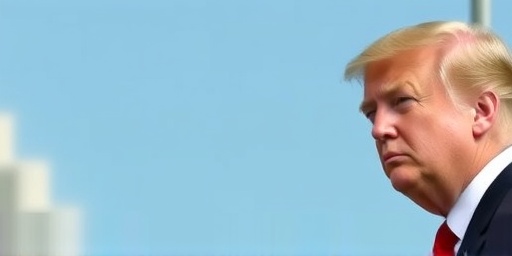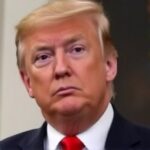As the Supreme Court deliberates on challenges to expansive presidential powers over trade, the Trump administration is racing to devise robust contingency plans to preserve its tariff regime, sources familiar with the matter told Bloomberg. This preparation underscores the high stakes in ongoing legal battles that could reshape U.S. trade policy, potentially forcing a rollback of tariffs imposed on billions in imports from China and other nations.
Supreme Court Case Looms Over Trump’s Trade Arsenal
The uncertainty stems from a pivotal Supreme Court case challenging the president’s authority to unilaterally impose tariffs under Section 232 of the Trade Expansion Act of 1962 and Section 301 of the Trade Act of 1974. These provisions have been the backbone of the Trump administration‘s trade policy, enabling tariffs on steel, aluminum, and a vast array of Chinese goods without congressional approval. Legal experts predict a ruling could come as early as this summer, with conservative justices showing skepticism toward broad executive overreach in trade matters.
According to Bloomberg’s reporting, administration officials are particularly concerned about a case involving the U.S. International Trade Commission and challenges from affected industries, such as the American Institute for International Steel, which argues that the tariffs exceed statutory limits. ‘The Supreme Court has the potential to upend years of hard-fought trade protections,’ said a senior trade official who spoke on condition of anonymity. If overturned, it could lead to the immediate suspension of tariffs affecting over $300 billion in annual imports, disrupting supply chains and inflating costs for U.S. manufacturers.
Historical data from the U.S. Census Bureau shows that since 2018, these tariffs have generated more than $80 billion in revenue for the federal government, but at a cost: a 2023 study by the Peterson Institute for International Economics estimated that they raised household expenses by an average of $800 per year. The administration’s tariff strategy was central to Trump’s 2016 campaign promises to revive American manufacturing, but critics, including economists from the Brookings Institution, warn that a court reversal could expose vulnerabilities in the U.S. economy’s reliance on protectionist measures.
Inside the Trump administration‘s Tariff Fallback Strategies
To mitigate these risks, the Trump administration is developing a multi-pronged set of contingency plans designed to bypass potential judicial roadblocks. High-level meetings at the Office of the U.S. Trade Representative (USTR) and the Department of Commerce have focused on alternative legal pathways, such as invoking emergency powers under the International Emergency Economic Powers Act (IEEPA) or seeking expedited congressional legislation to codify existing tariffs.
One key element involves accelerating bilateral trade negotiations to secure voluntary export restraints from trading partners, effectively mimicking tariff effects without direct imposition. For instance, officials are exploring deals with the European Union and Canada to limit steel exports in exchange for exemptions from broader duties. ‘We’re not putting all our eggs in the Section 232 basket,’ the anonymous official noted, highlighting plans to diversify enforcement tools.
Additionally, the contingency plans include bolstering domestic subsidies through the CHIPS Act and Inflation Reduction Act extensions, aiming to offset any tariff losses by investing over $50 billion in U.S. semiconductor and clean energy production. This approach aligns with the administration’s broader trade policy of ‘America First,’ but it requires navigating a divided Congress, where Republicans hold slim majorities. A leaked memo obtained by Bloomberg outlines scenarios where tariffs could be reimposed via executive orders if the Supreme Court rules narrowly, preserving some authority while appealing broader decisions.
Statistics from the U.S. Trade Representative’s office indicate that tariffs have already prompted a 15% decline in Chinese imports to the U.S. since 2018, redirecting trade flows to countries like Vietnam and Mexico. However, contingency measures must address retaliation: China has imposed counter-tariffs on $110 billion of U.S. exports, hitting agriculture hardest, with soybean farmers losing an estimated $12 billion in sales according to USDA data.
Industry Leaders Voice Concerns on Trade Policy Shifts
The prospect of Supreme Court intervention has elicited a spectrum of reactions from business leaders and trade associations. The U.S. Chamber of Commerce, representing over 300,000 businesses, has urged caution, warning in a recent statement that ‘overturning these tariffs could unleash inflationary pressures at a time when supply chains are still fragile post-pandemic.’ Chamber President Suzanne Clark emphasized the need for predictable trade policy, noting that uncertainty alone has already deterred $20 billion in potential investments, per a KPMG survey.
Conversely, import-dependent sectors like retail and technology are pushing for relief. The National Retail Federation (NRF) highlighted that tariffs on consumer electronics have increased prices by 10-20%, burdening American families. NRF CEO Matthew Shay stated, ‘The Trump administration’s contingency plans must prioritize consumers over protectionism; a Supreme Court win for challengers could finally level the playing field.’ Tech giants such as Apple and Dell, heavily reliant on Chinese assembly, have lobbied for tariff exemptions, citing a 2023 report from the Information Technology and Innovation Foundation that pegs tariff-related costs at $1.7 billion annually for the sector.
Labor unions, however, largely support the administration’s stance. United Steelworkers President David McCall affirmed, ‘These tariffs are vital for safeguarding American jobs; any contingency must ensure we don’t revert to offshoring.’ Union data shows that steel industry employment rose by 5,000 jobs since 2018, attributing the gains directly to protectionist measures. This divide illustrates the political tightrope the Trump administration walks, balancing Rust Belt voters with coastal economic interests.
International perspectives add complexity. The World Trade Organization (WTO) has criticized U.S. tariffs as violations of global rules, with ongoing disputes potentially escalating if contingency plans involve new unilateral actions. European Commission trade chief Valdis Dombrovskis warned last week that ‘further escalation would harm transatlantic ties,’ referencing a 2022 EU-U.S. truce on steel tariffs that averted a trade war.
Economic Ramifications of a Potential Tariff Overhaul
Should the Supreme Court strike down key tariff authorities, the economic fallout could be profound, rippling through global markets. Economists at the Federal Reserve project that removing tariffs might lower inflation by 0.5 percentage points in the short term but could cost 200,000 manufacturing jobs if imports flood back unchecked. A Moody’s Analytics model simulates a ‘trade shock’ scenario where GDP growth dips by 0.3% in 2025, exacerbated by supply chain disruptions.
The Trump administration’s trade policy has already reshaped alliances, fostering the U.S.-Mexico-Canada Agreement (USMCA) as a tariff-light alternative to NAFTA. Contingency plans aim to leverage this framework, potentially expanding USMCA quotas to absorb redirected trade from China. However, experts like former USTR Robert Lighthizer argue that without tariffs, U.S. leverage in negotiations evaporates. ‘Contingency isn’t just planning; it’s survival for our trade agenda,’ Lighthizer said in a recent Fox Business interview.
On the fiscal side, tariff revenues fund initiatives like farmer aid programs, which disbursed $28 billion during the 2018-2019 trade war. Losing this stream could strain the budget, prompting calls for alternative revenue sources such as a border adjustment tax—a proposal floated in contingency discussions but politically toxic. Goldman Sachs analysts forecast that a full tariff rollback might boost U.S. exports by 8% but at the expense of domestic producers, widening the trade deficit to $1 trillion annually.
Looking Ahead: Pathways for Resilient US Trade Policy
As the Supreme Court weighs its decision, the Trump administration’s contingency plans signal a proactive pivot toward legislative and diplomatic fortifications. Lawmakers on both sides of the aisle are drafting bills to clarify trade authorities, with Senate Finance Committee Chair Mike Crapo indicating bipartisan support for reforms that could enshrine tariffs in statute. ‘We can’t leave trade policy to the courts; Congress must step up,’ Crapo remarked during a recent hearing.
Looking forward, these developments could redefine U.S. engagement in multilateral forums like the WTO, where reform talks stall amid U.S. frustrations. The administration eyes alliances with like-minded nations, such as the Quad (U.S., Japan, India, Australia), to counter China’s influence without relying solely on tariffs. Trade policy experts predict that successful contingencies might stabilize markets, potentially adding 1.2% to GDP growth over the next decade through diversified supply chains.
Ultimately, the interplay between judicial rulings, executive maneuvers, and congressional action will determine the trajectory of American trade. With global tensions rising—from Russia’s war in Ukraine to U.S.-China tech rivalries—these plans are not merely defensive but essential for maintaining U.S. economic sovereignty in an unpredictable world.









